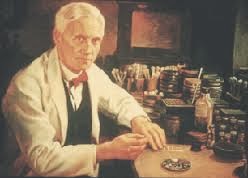In the Y10 class today, we began the first week of a project aimed at exploring the growth of microbes and the experimental methods for exploring the properties of antibiotics and disinfectants in eliminating bacterial and fungal contamination. The first experiment was straight forward: how do the antibiotics ampicillin and chloramphenicol compare with detergent and bleach in slowing (or killing) a vigorous culture of E.coli? What became clear at the end of last term, was the challenge of accurately pipetting microlitre volumes and was in evidence today, was a similar story. We need to master our pipetting techniques and take greater care in handling samples!
 There are a few rules when dealing with small volumes of reagents and sterile tubes containing culture media and bugs. Never tip the tube upside down, if you need to mix, use the vortex! Never tip an eppendorf tube upside down when it contains only 20ul of sample: if you do, pulse it in the microfuge to get the contents back to the bottom of the tube. You will not be able to do reproducible molecular biology if you keep repeating these basic errors. When we did the pipetting test in the middle of the day, over 60% did not obtain perfect results. Let's get on top of this!
There are a few rules when dealing with small volumes of reagents and sterile tubes containing culture media and bugs. Never tip the tube upside down, if you need to mix, use the vortex! Never tip an eppendorf tube upside down when it contains only 20ul of sample: if you do, pulse it in the microfuge to get the contents back to the bottom of the tube. You will not be able to do reproducible molecular biology if you keep repeating these basic errors. When we did the pipetting test in the middle of the day, over 60% did not obtain perfect results. Let's get on top of this!
Getting back to microbes, I hope you all saw the Penicillium I had grown over the holiday. You have inoculated broths at room and fridge temperatures. They are coming on nicely and we will work with them next week. The penicillin story is another one of those great stories of accidental, or serendipitous, discoveries. That is you stumble across an unexpected observation and then pursue its significance. There is no doubt that Fleming's discovery has had a major impact on world health. I hope you enjoy completing the tasks.
I just spent an hour looking over the growth results from Tuesday and everyone has obtained the same, interesting result. However I will not give away the "score" until you have all looked. So until next week....
 There are a few rules when dealing with small volumes of reagents and sterile tubes containing culture media and bugs. Never tip the tube upside down, if you need to mix, use the vortex! Never tip an eppendorf tube upside down when it contains only 20ul of sample: if you do, pulse it in the microfuge to get the contents back to the bottom of the tube. You will not be able to do reproducible molecular biology if you keep repeating these basic errors. When we did the pipetting test in the middle of the day, over 60% did not obtain perfect results. Let's get on top of this!
There are a few rules when dealing with small volumes of reagents and sterile tubes containing culture media and bugs. Never tip the tube upside down, if you need to mix, use the vortex! Never tip an eppendorf tube upside down when it contains only 20ul of sample: if you do, pulse it in the microfuge to get the contents back to the bottom of the tube. You will not be able to do reproducible molecular biology if you keep repeating these basic errors. When we did the pipetting test in the middle of the day, over 60% did not obtain perfect results. Let's get on top of this!Getting back to microbes, I hope you all saw the Penicillium I had grown over the holiday. You have inoculated broths at room and fridge temperatures. They are coming on nicely and we will work with them next week. The penicillin story is another one of those great stories of accidental, or serendipitous, discoveries. That is you stumble across an unexpected observation and then pursue its significance. There is no doubt that Fleming's discovery has had a major impact on world health. I hope you enjoy completing the tasks.
I just spent an hour looking over the growth results from Tuesday and everyone has obtained the same, interesting result. However I will not give away the "score" until you have all looked. So until next week....


No comments:
Post a Comment